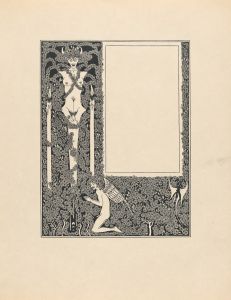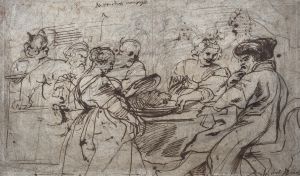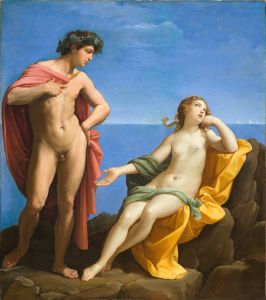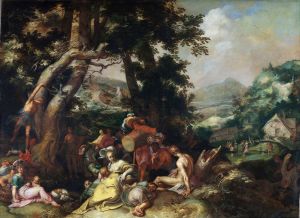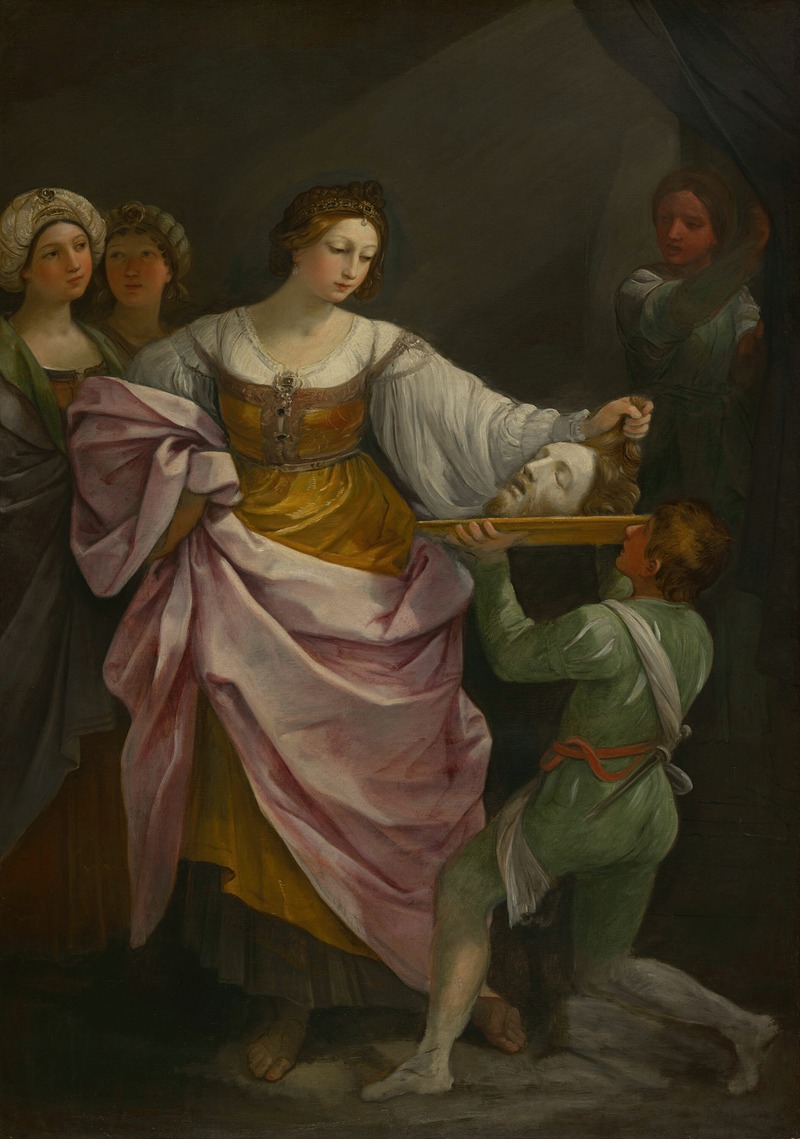
Salome with the Head of Saint John the Baptist
A hand-painted replica of Guido Reni’s masterpiece Salome with the Head of Saint John the Baptist, meticulously crafted by professional artists to capture the true essence of the original. Each piece is created with museum-quality canvas and rare mineral pigments, carefully painted by experienced artists with delicate brushstrokes and rich, layered colors to perfectly recreate the texture of the original artwork. Unlike machine-printed reproductions, this hand-painted version brings the painting to life, infused with the artist’s emotions and skill in every stroke. Whether for personal collection or home decoration, it instantly elevates the artistic atmosphere of any space.
"Salome with the Head of Saint John the Baptist" is a painting by the Italian Baroque artist Guido Reni. Created in the early 17th century, this artwork is a notable example of Reni's mastery of dramatic composition and his ability to convey emotion through delicate yet powerful imagery. The painting depicts the biblical story of Salome, a figure from the New Testament, who is shown holding the severed head of Saint John the Baptist on a platter.
Guido Reni was one of the most prominent painters of the Baroque period, known for his refined and graceful style. His works often focused on religious and mythological themes, and he was highly regarded for his ability to combine idealized beauty with emotional depth. In this painting, Reni captures the moment after the execution of John the Baptist, a prophet who was imprisoned and later beheaded at the request of Salome, as described in the Gospels of Matthew and Mark.
The composition of the painting emphasizes the contrast between Salome's serene, almost detached expression and the gruesome nature of the scene. Salome is portrayed as a young woman of striking beauty, dressed in elegant clothing that reflects the fashion of the time. Her calm demeanor adds a sense of unease to the image, as it contrasts with the violent act she has just witnessed or been complicit in. The head of Saint John the Baptist, rendered with meticulous detail, rests on a platter, its lifeless expression serving as a stark reminder of the brutality of the event.
Reni's use of light and shadow is a hallmark of his style, and in this painting, he employs chiaroscuro to great effect. The interplay of light and dark enhances the drama of the scene, drawing the viewer's attention to the central figures and heightening the emotional impact of the work. The soft, luminous quality of the light also lends an ethereal beauty to the painting, a characteristic feature of Reni's oeuvre.
Several versions of "Salome with the Head of Saint John the Baptist" exist, as Reni often revisited popular themes and motifs in his work. These variations can be found in different collections and museums around the world, showcasing slight differences in composition and detail. The exact date of creation for each version is not always documented, but they are generally attributed to the early 17th century, during the height of Reni's career.
This painting is a testament to Guido Reni's skill as a storyteller and his ability to evoke complex emotions through his art. It remains an important example of Baroque painting and continues to be studied and admired for its artistic and historical significance.





